Microclimate and Weathering in Cultural Heritage: Design of a Monitoring Apparatus for Field Exposure Tests
Abstract
1. Introduction
2. Materials and Methods
2.1. Selection of Materials
2.2. Apparatus
2.2.1. Hardware Components
- (1)
- Stand: it is a cube-shaped structure composed of white PVC panels reinforced with a stainless steel frame and with AISI-304 stainless steel L-hooks for holding the stone and wood samples in place. Each side is 100 cm or 50 cm long, depending on the requirements for the final installation and the number of samples.
- (2)
- Sensor bundle: it includes two types of microclimate sensors for measuring surface temperature and moisture of each sample. The temperature sensor is the Texas Instruments LM60B. It is analogue bipolar and operates in a −25 °C to 125 °C range, with an accuracy of ±2 °C at room temperature and ±3 °C over the full range. Its output voltage is linearly proportional to temperature (6.25 mV/°C), with a DC offset and a nonlinearity of ±0.6 °C. The moisture/dew sensor is the Samyoung SY-DS-1. It is analogue resistive and operates in the range 0–60 °C and 0–100% relative humidity (RH). Its electrical resistance increases sharply in wet conditions (with maxima of 10 kΩ, 100 kΩ, and 200 kΩ at 80%, 93%, and 98% RH); therefore, it is used as a binary dry/wet sensor. The two sensors are fastened to each sample using UV-resistant nylon-66 cable ties (Figure 2).
- (3)
- Control unit: it includes the electronics for acquiring, processing, storing, and transferring the microclimate data. It consists of a mux/demux system, an analogue-to-digital converter, and a single-board computer. The analogue signals from the sensors travel through ribbon cables and are processed by a stack of mux/demux boards controlled by a master board. The system runs 128 channels (when 8 mux/demux boards are used) or 80 channels (with 5 boards), each channel corresponding to one temperature or moisture sensor. The second component in the chain is a Waveshare high-precision AD/DA board, which converts the analogue signals into digital signals. Finally, these are transferred to the single-board computer, a Raspberry Pi 3 Model B, which uses a 64-bit Broadcom BCM2837B0 Armv7 processor and a Linux Debian Buster operating system with Raspberry Pi Desktop, with 1 GB RAM. The data are saved on an 8 GB microSD and uploaded daily online using an Ethernet connection to the local network or to a Wi-Fi 4G/LTE router Teltonika RUT240 with a data SIM card (Figure 3). This configuration allows for long and low-energy monitoring campaigns: one month of data takes less than 6 MB of storage space, and the power consumption is mostly due to the single-board computer, requiring just 260 mA (idle)/480 mA (under load).
- (4)
- Weather station: it provides time series of common meteorological parameters, including air temperature, RH, precipitation, wind speed and direction, solar radiation, pressure, etc. measured locally. The instrument used is an integrated monitoring system developed by AGENSO, called Ardeusi.gr. Where needed, a commercial weather station—Davis Vantage Pro2—was used instead.
2.2.2. Software Components
2.3. Installation
- Clock Tower in St. Mark’s Square, Venice, Italy (45°26′05.2″ N, 12°20′20.2″ E). This is the only pilot site requiring the installation of the undersized apparatus (with a 50 cm stand and 80 channels), without the wood samples.
- Department of Geosciences of the University of Padova, Padova, Italy (45°24′31.8″ N, 11°53′36.4″ E).
- Vestfold and Telemark County Council, Tønsberg, Norway (59°15′55.9″ N, 10°24′57.6″ E).
3. Results and Discussion
3.1. Scales of Observation
- (1)
- Material scale: data from the surface sensors.
- (2)
- Local scale: data from the weather station.
- (3)
- Regional/urban scale: data freely available from the official regional agencies of environmental monitoring. In the cases of Venice and Padova, the data published by the ARPAV (Regional Agency for the Environmental Prevention and Protection of Veneto) are considered [11]. ARPAV collects records of air temperature, RH, precipitation, wind speed and direction, and solar radiation, with one weather station in each city. Moreover, ARPAV measures the concentration of air pollutants, including CO, NOx, SO2, O3, and PM10. There are two monitoring stations in the historical district of Venice and three in Padova, and they are differentiated based on their location (urban traffic, industrial, or background). For Tønsberg, the data source is the Norsk Klimaservicesenter (Norwegian Center for Climate Services) instead [12]. The center provides time series of air temperature, RH, precipitation, wind speed and direction, and solar radiation. There are eight weather stations in Tønsberg logging temperature and precipitation data, whereas the other parameters can be retrieved from the records of nearby stations (e.g., Melsom and Ramnes).
3.2. Preliminary Data Series
4. Conclusions
Author Contributions
Funding
Institutional Review Board Statement
Informed Consent Statement
Data Availability Statement
Acknowledgments
Conflicts of Interest
References
- Sabbioni, C.; Brimblecombe, P.; Cassar, M. The Atlas of Climate Change Impact on European Cultural Heritage; Anthem Press: London, UK, 2010. [Google Scholar]
- Sardella, A.; Palazzi, E.; von Hardenberg, J.; del Grande, C.; de Nuntiis, P.; Sabbioni, C.; Bonazza, A. Risk mapping for the sustainable protection of cultural heritage in extreme changing environments. Atmosphere 2020, 11, 700. [Google Scholar] [CrossRef]
- Germinario, L.; Andriani, G.F.; Laviano, R. Decay of calcareous building stone under the combined action of thermoclastism and cryoclastism: A laboratory simulation. Constr. Build. Mater. 2015, 75, 385–394. [Google Scholar] [CrossRef]
- Salvini, S.; Bertoncello, R.; Coletti, C.; Germinario, L.; Maritan, L.; Massironi, M.; Pozzobon, R.; Mazzoli, C. Recession rate of carbonate rocks used in cultural heritage: Textural control assessed by accelerated ageing tests. J. Cult. Herit. 2022, 57, 154–164. [Google Scholar] [CrossRef]
- Ghedini, N.; Ozga, I.; Bonazza, A.; Dilillo, M.; Cachier, H.; Sabbioni, C. Atmospheric aerosol monitoring as a strategy for the preventive conservation of urban monumental heritage: The Florence Baptistery. Atmos. Environ. 2011, 45, 5979–5987. [Google Scholar] [CrossRef]
- Roots, O.O.; Roose, A.; Eerme, K. Remote sensing of climate change, long-term monitoring of air pollution and stone material corrosion in Estonia. Int. J. Remote Sens. 2011, 32, 9691–9705. [Google Scholar] [CrossRef]
- Daly, C. The design of a legacy indicator tool for measuring climate change related impacts on built heritage. Herit. Sci. 2016, 4, 19. [Google Scholar] [CrossRef]
- Haugen, A.; Bertolin, C.; Leijonhufvud, G.; Olstad, T.; Broström, T. A methodology for long-term monitoring of climate change impacts on historic buildings. Geosciences 2018, 8, 370. [Google Scholar] [CrossRef]
- Kessler, D.W.; Anderson, R.E. Stone Exposure Test Wall; Building Materials and Structures Report 125; United States Department of Commerce: Washington, DC, USA, 1951. [Google Scholar]
- Bonazza, A.; Messina, P.; Sabbioni, C.; Grossi, C.M.; Brimblecombe, P. Mapping the impact of climate change on surface recession of carbonate buildings in Europe. Sci. Total Environ. 2009, 407, 2039–2050. [Google Scholar] [CrossRef] [PubMed]
- ARPAV. Agenzia Regionale Prevenzione Protezione Ambientale Veneto. Available online: https://www.arpa.veneto.it (accessed on 22 June 2022).
- Norsk Klimaservicesenter. Norwegian Center for Climate Services. Available online: https://klimaservicesenter.no (accessed on 22 June 2022).
- Choidis, P.; Kraniotis, D.; Lehtonen, I.; Hellum, B. A modelling approach for the assessment of climate change impact on the fungal colonization of historic timber structures. Forests 2021, 12, 819. [Google Scholar] [CrossRef]
- Mitro, N.; Krommyda, M.; Amditis, A. Smart Tags: IoT sensors for monitoring the micro-climate of cultural heritage monuments. Appl. Sci. 2022, 12, 2315. [Google Scholar] [CrossRef]
- Shabani, A.; Skamantzari, M.; Tapinaki, S.; Georgopoulos, A.; Plevris, V.; Kioumarsi, M. 3D simulation models for developing digital twins of heritage structures: Challenges and strategies. Procedia Struct. Integr. 2022, 37, 314–320. [Google Scholar] [CrossRef]
- Hyperion. Hyperion Project. Available online: https://www.hyperion-project.eu (accessed on 18 September 2022).
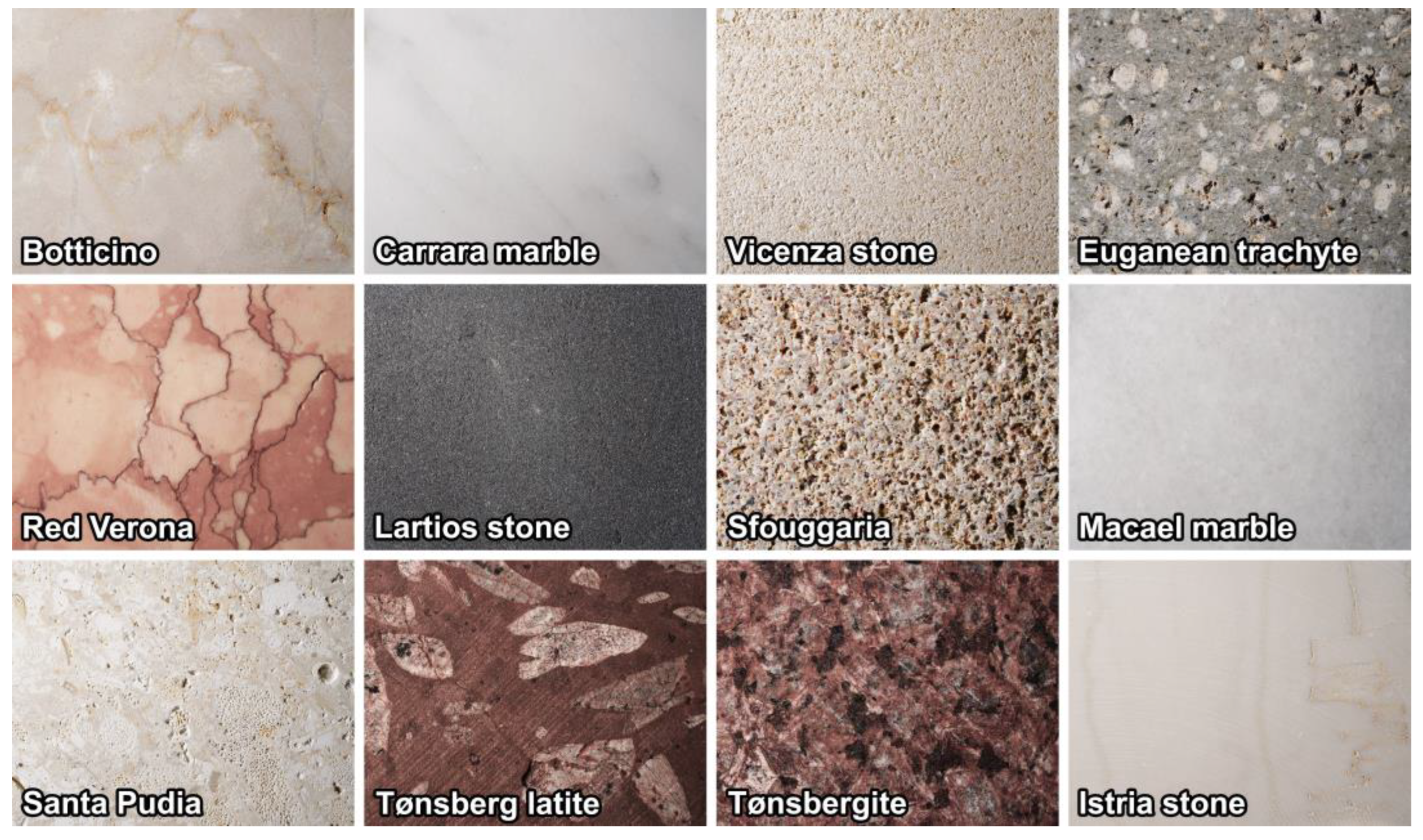
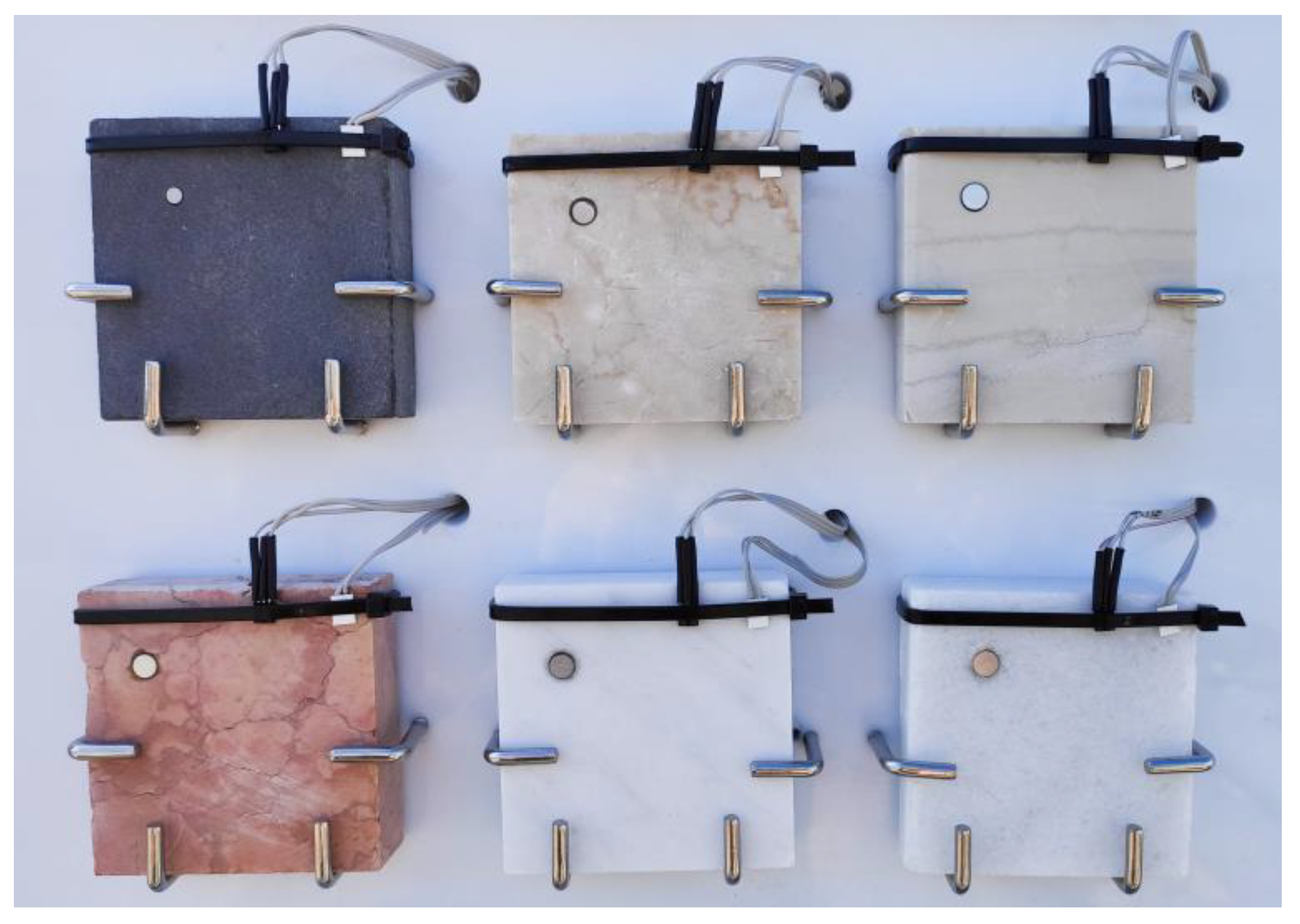
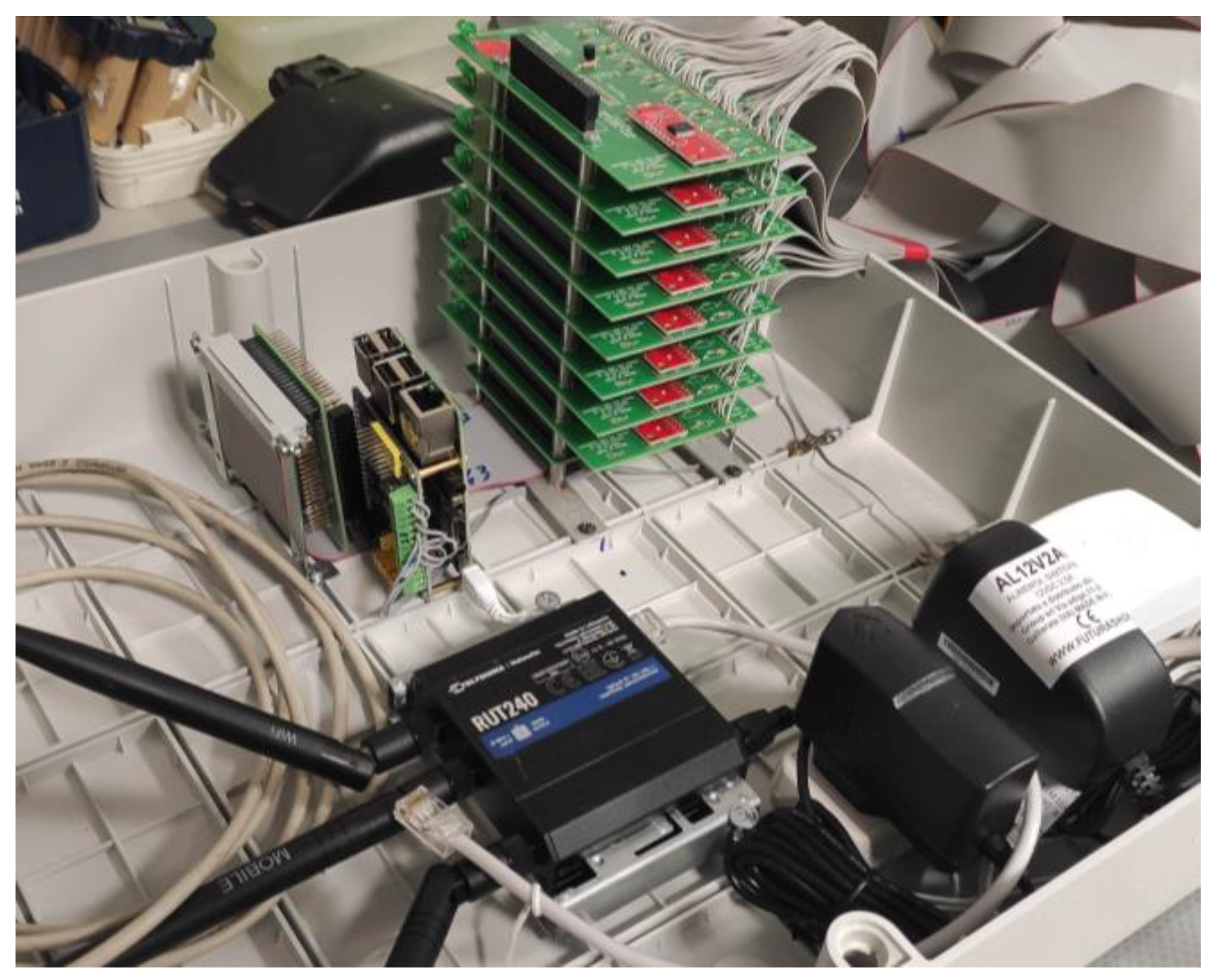
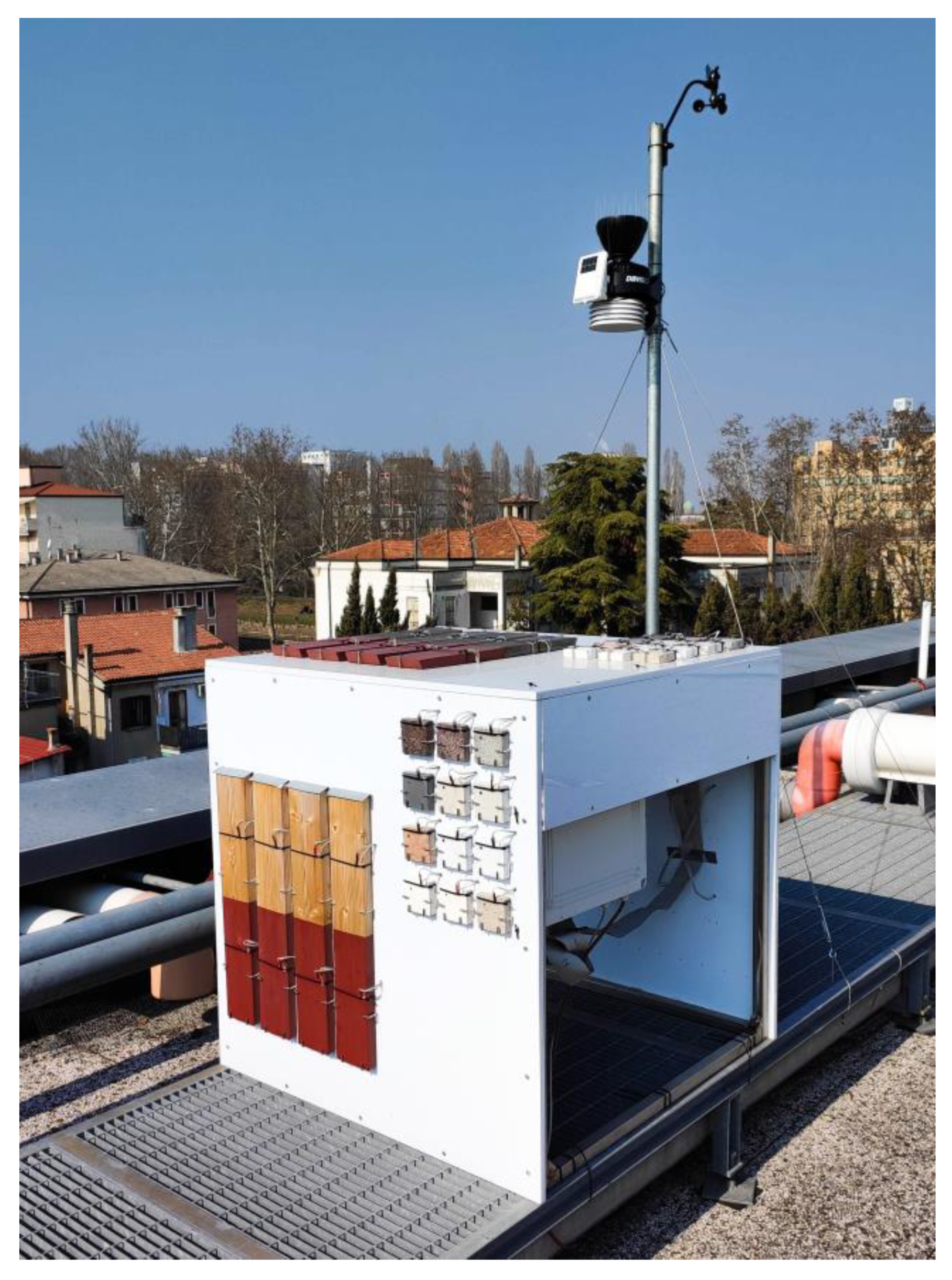
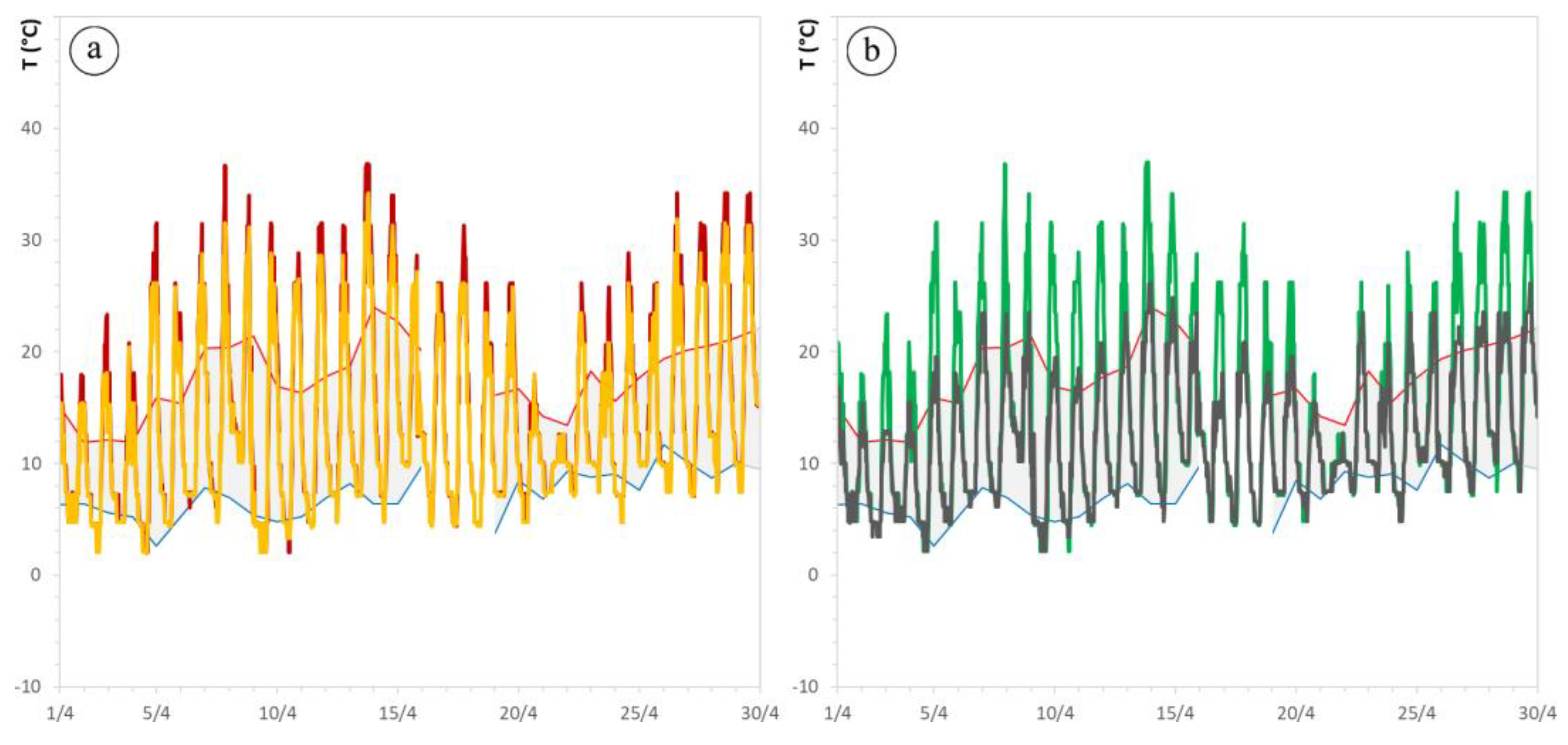
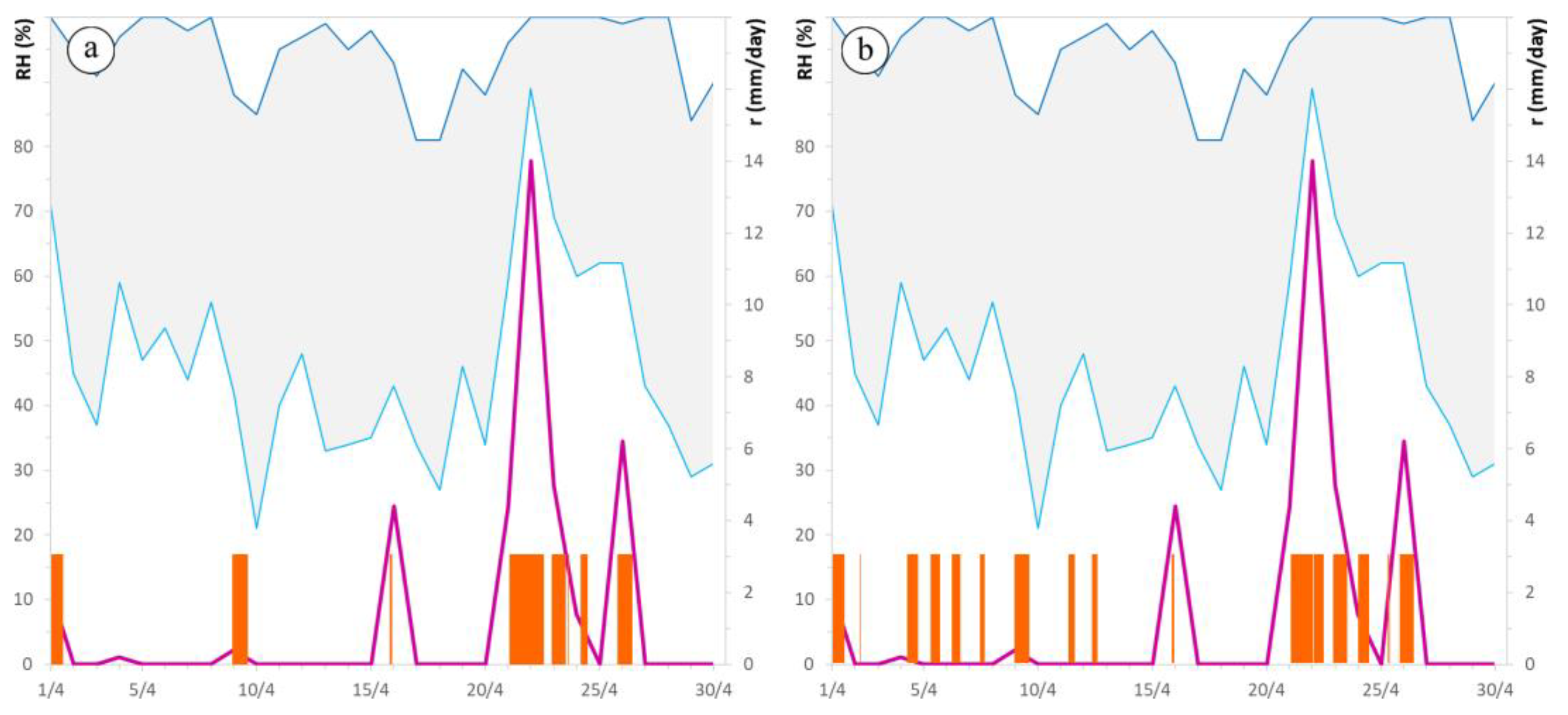
Publisher’s Note: MDPI stays neutral with regard to jurisdictional claims in published maps and institutional affiliations. |
© 2022 by the authors. Licensee MDPI, Basel, Switzerland. This article is an open access article distributed under the terms and conditions of the Creative Commons Attribution (CC BY) license (https://creativecommons.org/licenses/by/4.0/).
Share and Cite
Germinario, L.; Coletti, C.; Girardi, G.; Maritan, L.; Praticelli, N.; Sassi, R.; Solstad, J.; Mazzoli, C. Microclimate and Weathering in Cultural Heritage: Design of a Monitoring Apparatus for Field Exposure Tests. Heritage 2022, 5, 3211-3219. https://doi.org/10.3390/heritage5040165
Germinario L, Coletti C, Girardi G, Maritan L, Praticelli N, Sassi R, Solstad J, Mazzoli C. Microclimate and Weathering in Cultural Heritage: Design of a Monitoring Apparatus for Field Exposure Tests. Heritage. 2022; 5(4):3211-3219. https://doi.org/10.3390/heritage5040165
Chicago/Turabian StyleGerminario, Luigi, Chiara Coletti, Giampaolo Girardi, Lara Maritan, Nicola Praticelli, Raffaele Sassi, Jørgen Solstad, and Claudio Mazzoli. 2022. "Microclimate and Weathering in Cultural Heritage: Design of a Monitoring Apparatus for Field Exposure Tests" Heritage 5, no. 4: 3211-3219. https://doi.org/10.3390/heritage5040165
APA StyleGerminario, L., Coletti, C., Girardi, G., Maritan, L., Praticelli, N., Sassi, R., Solstad, J., & Mazzoli, C. (2022). Microclimate and Weathering in Cultural Heritage: Design of a Monitoring Apparatus for Field Exposure Tests. Heritage, 5(4), 3211-3219. https://doi.org/10.3390/heritage5040165








